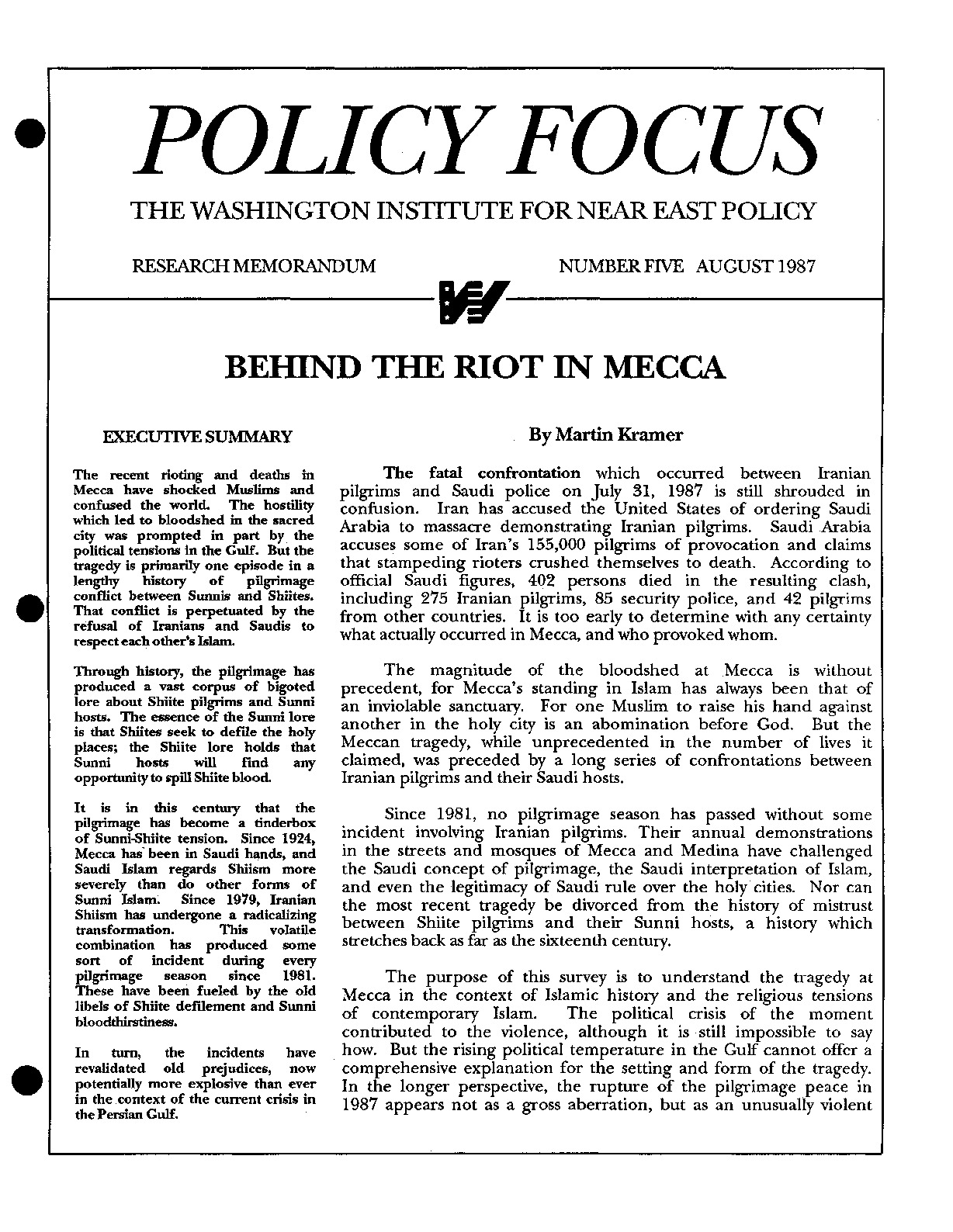The recent rioting and deaths in Mecca have shocked Muslims and confused the world. The hostility which led to bloodshed in the sacred city was prompted in part by the political tensions in the Gulf. But the tragedy is primarily one episode in a lengthy history of pilgrimage conflict between Sunnis and Shiites. That conflict is perpetuated by the refusal of Iranians and Saudis to respect each other's Islam.
Through history, the pilgrimage has produced a vast corpus of bigoted lore about Shiite pilgrims and Sunni hosts. The essence of the Sunni lore is that Shiites seek to defile the holy places; the Shiite lore holds that Sunni hosts will find any opportunity to spill Shiite blood.
It is in this century that the pilgrimage has become a tinderbox of Sunni-Shiite tension. Since 1924. Mecca has been in Saudi hands, and Saudi Islam regards Shiism more severely than do other forms of Sunni Islam. Since 1979, Iranian Shiism has undergone a radicalizing transformation. This volatile combination has produced some sort of incident during every pilgrimage season since 1981. These have been fueled by the old libels of Shiite defilement and Sunni bloodthirstiness.
In turn, the incidents have revalidated old prejudices, now potentially more explosive than ever in the context of the current crisis in the Persian Gulf.




